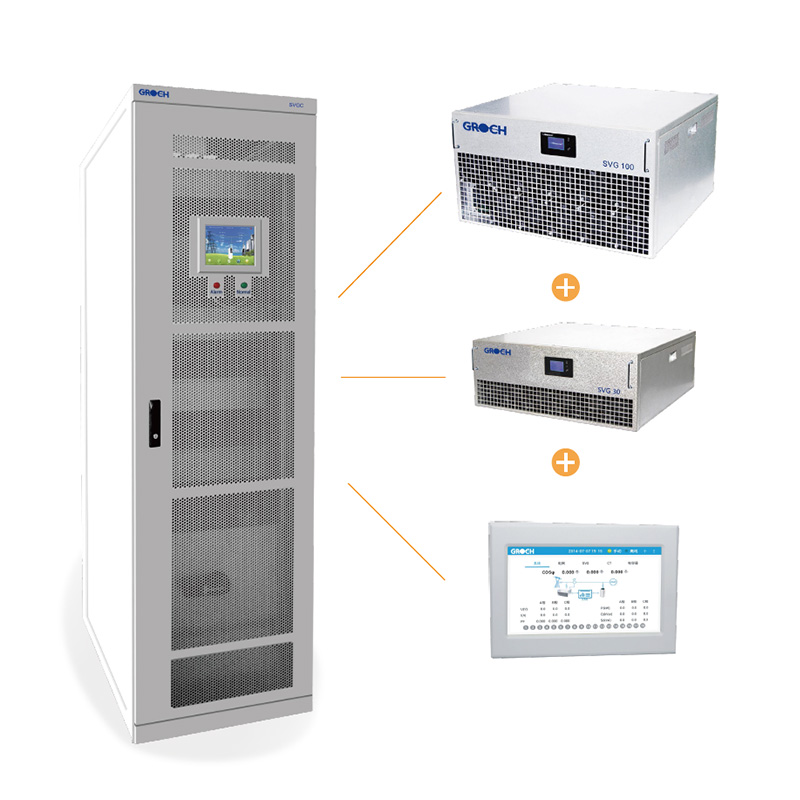Product introduction
SVGC system architecture/Main functions of ICMS
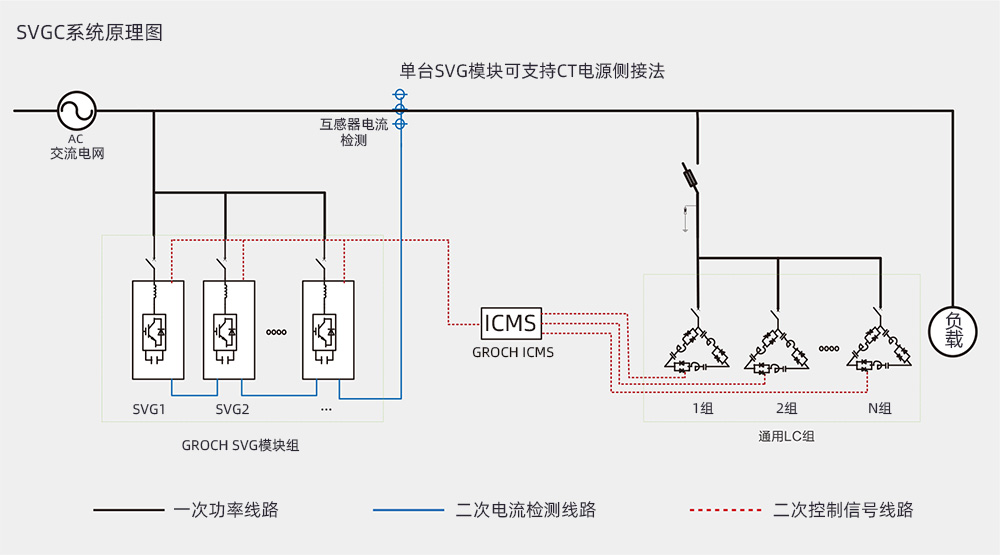
SVGC structure diagram
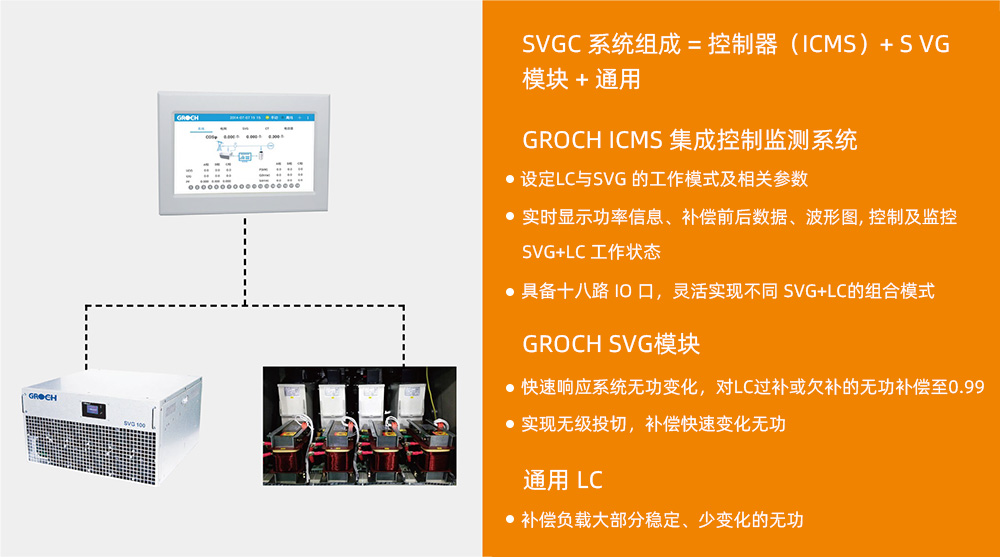
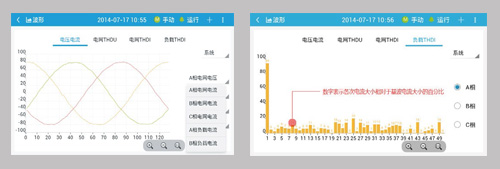 7-inch touch color screen, real-time display of power information, data and waveform before and after compensation
7-inch touch color screen, real-time display of power information, data and waveform before and after compensationReal-time display data: GROCH ICMS can control and monitor the working state of SVG and LC in real time, and can display important parameters such as grid voltage, grid current, frequency, COSφ, PF, THDU, THDI, active power, reactive power, apparent power, SVG working state, capacitor working state on the display screen.
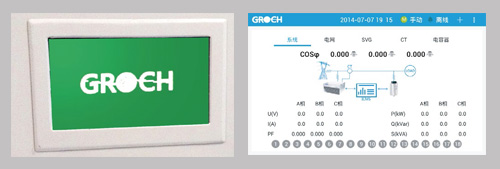 Image viewing function
Image viewing functionICMS has real-time image display function, including waveform diagram and spectrum diagram two forms. In the graphical state, the operator can enlarge or reduce the size of the graphic at any time as needed to meet different viewing needs.
Waveform data: grid voltage waveform, grid current waveform, load current waveform, compensation current waveform, grid voltage spectrum, grid current spectrum, load current spectrum.
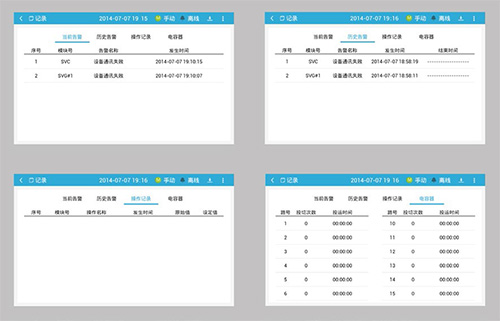 Data logging function
Data logging functionGROCH ICMS can record the running time of each group of capacitors, the switching times of each group of capacitors, the running time of the equipment, historical operation, historical alarm, the switching times of SVG and LC and the running time
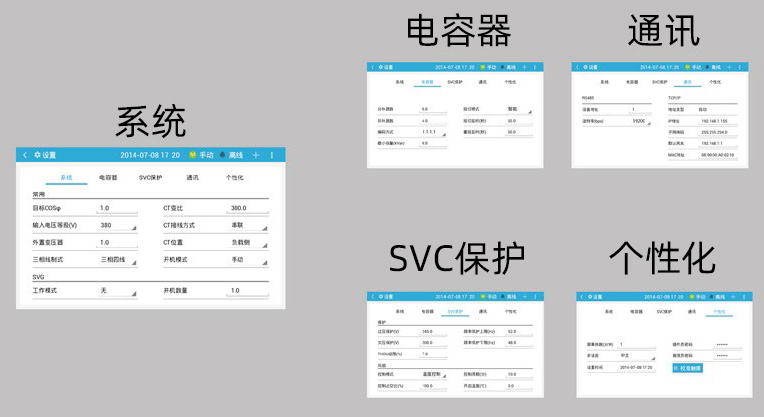 Compensation mode setting function
Compensation mode setting functionGROCH ICMS can be freely set for three-phase co-compensation, three-phase compensation and hybrid compensation.
GROCH ICMS can choose thyristor switching or contactor switching; Can set a variety of capacitor bank switching modes, such as: stack, normal, cycle, intelligent mode;
GROCH ICMS has over and under voltage, over and under frequency, phase loss, overload, over temperature, harmonic voltage exceeded and other protection functions.
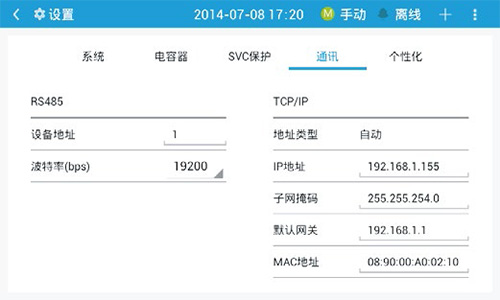 Telecommunication function
Telecommunication functionThe GROCH ICMS provides 485 ports and network ports (optional) to meet the requirements for ICMS control and monitoring on different sites.
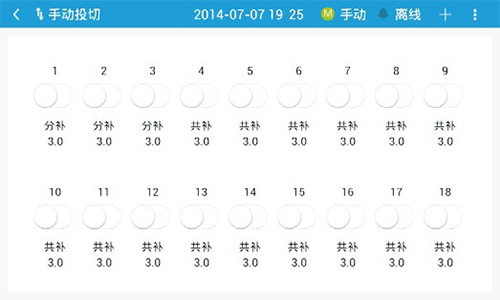 With 18 I/O ports, flexible implementation of different SVG+LC combination mode
With 18 I/O ports, flexible implementation of different SVG+LC combination modeIn manual switch mode, click the white button under a capacitor to turn on or off the corresponding capacitor.
SVGC product features
Good compensation characteristic
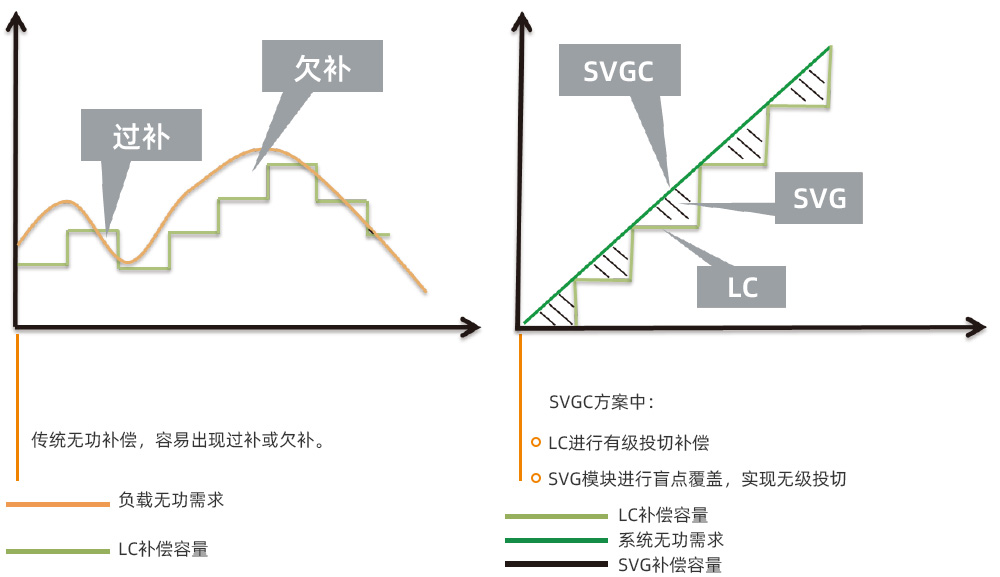
Fast response time
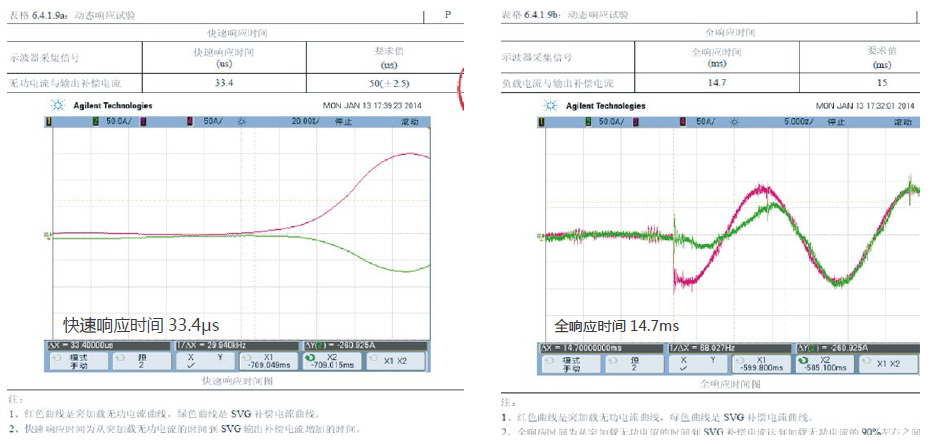
In the SVGC scheme:
● The fast response is implemented by the SVG module. SVG fast response time<50us, full response time < 15ms;
● SVGC SVG reflects the advantages of power electronic switch, in the traditional SVC, thyristor is only a fast switching function, can not reflect the "high-frequency fast switching" value. (Usually more than 100ms at a time, and IGB T in SVG can be switched more than 15 000 times in 1 second)
Flexible application
By combining any of the power components in the SVGC solution (SVG module or LC), you can achieve:
● Performance adjustment of SVGC solution: SVGC compensation range from -1 to 1
● Price adjustment of SVGC scheme
● SVGC solution application industry coverage
Take 300kvar compensation capacity as an example:
| SVGC Solution 1 | SVGC Solution 2 | SVGC Solution 3 | |
|---|---|---|---|
| LC | 50×5 | 50×4 | 30x9 |
| SVG | 50 | 100 | 30 |
| Compensating capacity | -50~30 | -100~30 | -30~300 |
Note: In the compensation range table, negative is perceptual and positive is capacitive
SVGC working sequence diagram
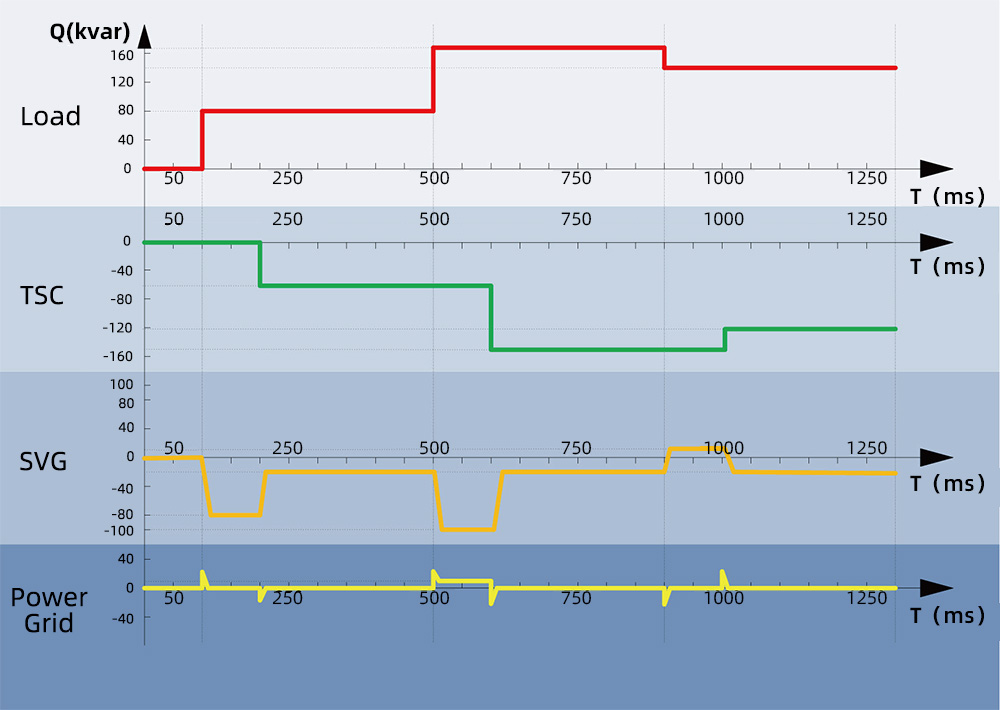
Time sequence diagram of compensation effect when LC and SVG are used together (LC- compensation capacity 30kvar a group, SVG-100kvar)
● 100 ~ 200ms:
When the load's reactive power surges, LC has no time to act, and SVG will respond to compensate the system's reactive power in real time.
● 200 ~ 500ms:
LC responds to input compensation, and SVG reduces the compensation capacity in real time.
● 900 ~ 1000ms:
When the reactive power of the load decreases abruptly, LC has no time to cut the input capacitor, and SVG will send a reverse compensated reactive power in real time to compensate the capacity of LC overfill.
● 1000ms ~:
LC cuts out the excess compensation capacity, and SVG will track the reactive power change of the system in real time and eliminate the remaining reactive power in the system.





